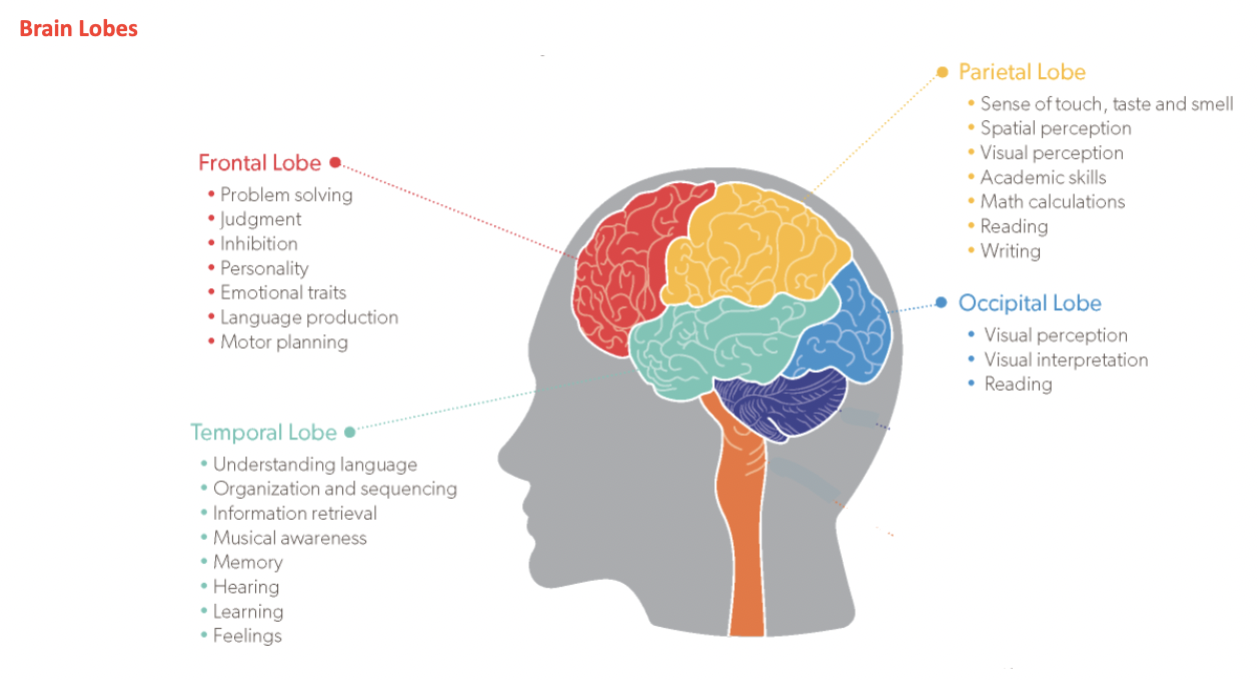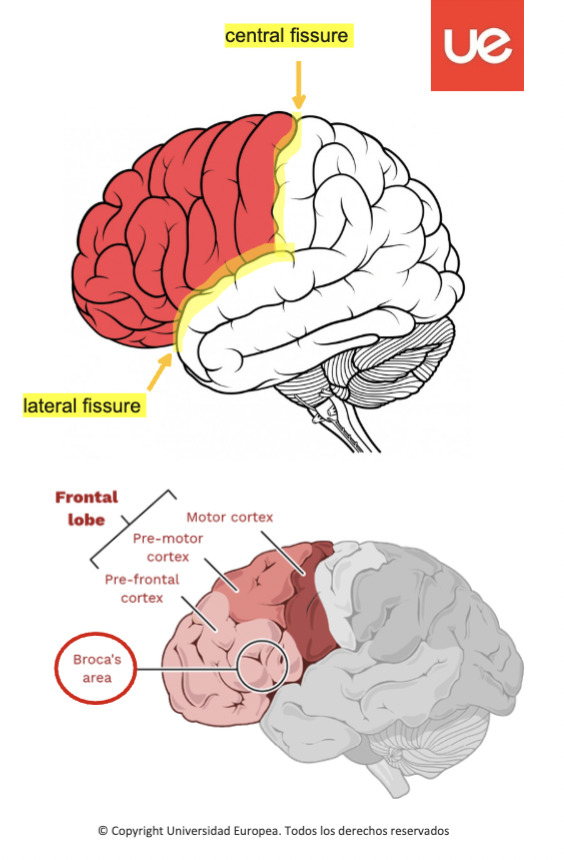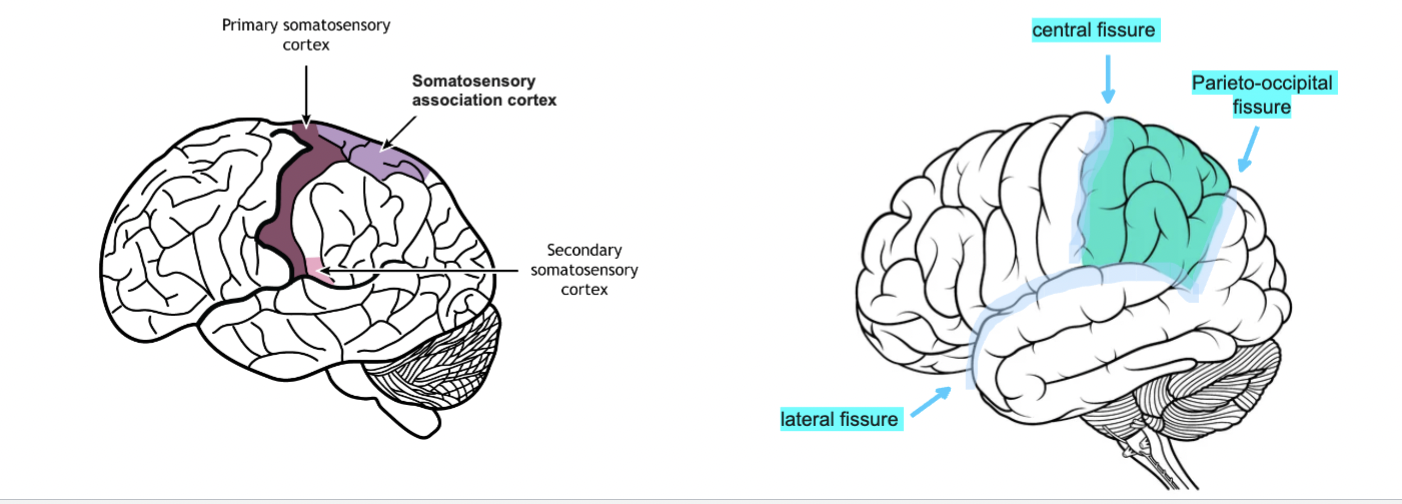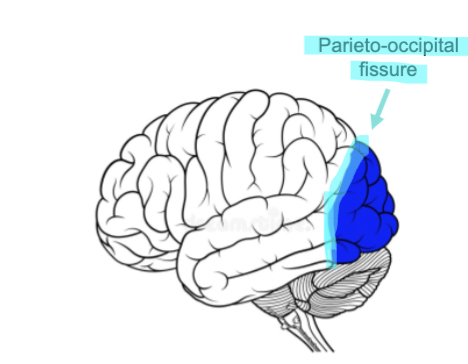Brain Lobes
1/6
There's no tags or description
Looks like no tags are added yet.
Name | Mastery | Learn | Test | Matching | Spaced |
|---|
No study sessions yet.
7 Terms
What are the lobes of the brain?
Frontal Lobe
Parietal lobe
Temporal lobe
Occipital lobe

What happens if Broca’s area is damaged, but Wernicke’s area is not?
The person understands language and knows what they want to say but has trouble
expressing it.
What happens if Wernicke’s area is damaged, but Broca’s area is not?
The person can speak smoothly and with normal grammar, but as they have difficulty
understanding spoken and written language, they may not realize that their speech is
nonsensical. They can speak easily, but they don’t understand language well, and their speech lacks meaning.
Frontal lobe
It is located between the central fissure (Rolando's fissure) and the lateral fissure
(Silvio's fissure).
Mainly responsible for higher functions (attention, motivation, memory, planning, movement, etc.).
Its main areas are the primary motor cortex, secondary motor cortex (or premotor area and the prefrontal cortex.
Severe lesions of this area can cause striking changes in the patient's personality (Phineas Gage case).

Parietal lobe
It is surrounded by the parieto-occipital fissure, the Rolando fissure, and the Sylvian fissure.
Its functions are mainly related to the processing and integration of somatosensory information, movement control, spatial orientation, and
calculation.It has primary, secondary, and tertiary or association somatosensory areas.

Temporal lobe
It is located below the lateral fissure (Sylvian fissure).
It is involved in auditory processing, memory, linguistic comprehension,
multimodal sensory integration and emotions.

Occipital lobe
It is located in the posterior part of the brain and is separated from the parietal
by the parieto-occipital fissure.It is mainly responsible for vision
